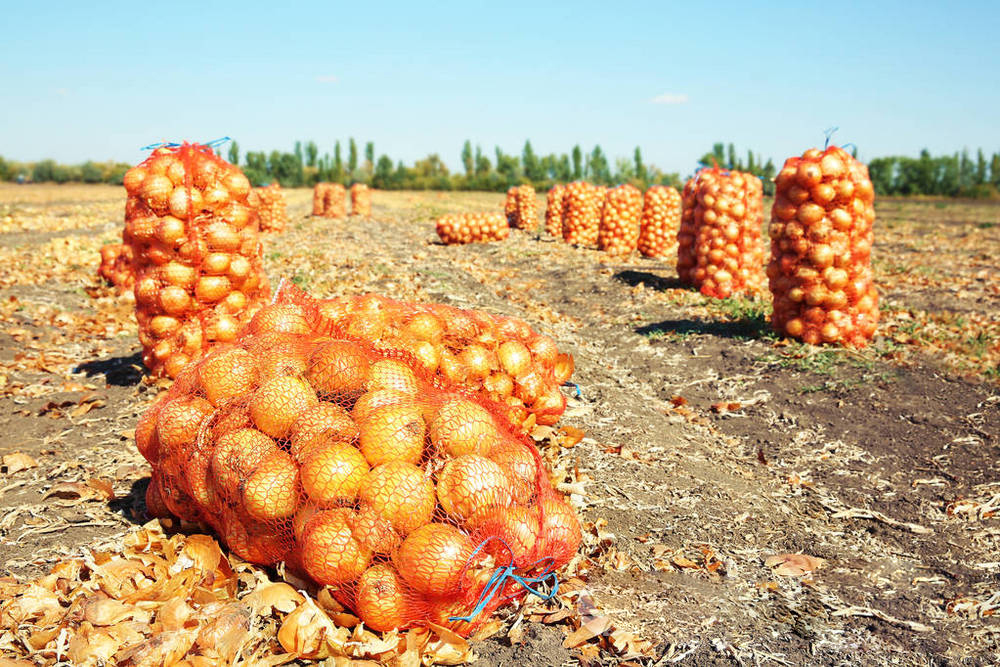Nowadays, onions are a common condiment and can be eaten raw or cooked with other foods. Onions are typically used mainly for flavoring and preparing dishes and salads. They are also processed into onion powder, fried onion rings, pickled pearls, or cocktail onions. China is now the largest exporter of onions in the world. They use onion bags for packaging onions and shipping them worldwide. Onion bags have many benefits, such as breathability, durability, and ease of transportation. This is usually the best way to store green onions.
Onion transportation and onion store

Onions bulbs go dormant after harvesting. This depends on the variety and weather conditions that occurred during growth. To maintain high quality, place onions in special onion bags after harvest, which effectively inhibit rooting and sprouting during storage. After the outer skin of the onion has dried, store it at the same room temperature.
Onions are usually stored in onion bags. Air is circulated and kept at a constant temperature. Onions should be thawed at 0°C to 5°C for 1 to 2 Weeks. Quick thawing can damage the onion bulbs before they are removed from store onions in the fridge. Store onions in fridge at <-4°C may cause frostbite. Onions behave as soft, water-soaked, fleshy bulbs. Rapid decay upon transfer from cold storage at higher temperatures to warmer temperatures leads to microbial proliferation.
The onion Store Disorders

Onions can get various diseases such as bacterial soft rot, blue mold, base rot, brown spot, and black mold. If an onion is rotting, it needs to be cleaned out of the onion bag in time to avoid infecting other onions.
The onion Store Tips / Storage Period
When inspecting the goods to be loaded, you must note the following points.
- It is the best way to store onion in a dry environment
- Handle the onions carefully and do not get them wet or bruised
- The onions in the bag should be as ripe and healthy as possible. This reduces the chance of disease.
- The store onions neck needs to be cut so that it does not rot easily
- Should not overcrowd the onion bag to retain some space to move
- Store onion for no longer than 4 months and avoid direct sunlight
- Do not put onions and potatoes, and other water-absorbing vegetables together.
Store onions are prone to disasters.
Frost
Frost can cause damage to most types of bulbs. Decomposition, moisture, and slime are external characteristics, while discoloration occurs internally. This damage can occur during shipment, or upon unloading. Begonia bulbs and Grandiflora bulbs may be the most sensitive. These two types will not grow if they are frozen. Frozen bulbs will decompose immediately when exposed to room temperature.
Sweat
Damage can also be caused by sweat, caused by temperature fluctuations during the voyage. Bulbs can also sweat when shipped too early after harvest.
Rooting
Usually, dry roots indicate old roots. For some types of bulbs, if roots of more than 3 cm have grown and are few in number, there are no harmful effects because there are enough root buds to ensure proper root growth. Rooting during transport does not hurt some bulbs unless it is excessively delayed.
Outer skin
Try not to remove the mold from the outer skin of the bulb until it is time to brush it off for consumption. They protect the onion bulbs from sprouting if they are in transit for too long.
Store onions conclusion
In conclusion, if you want to buy onions or if you are an onion producer, try to choose onion bags during transportation. Onion bags are good for onion breathing as well as transport. One might even say that this is the best way to store green onions.
